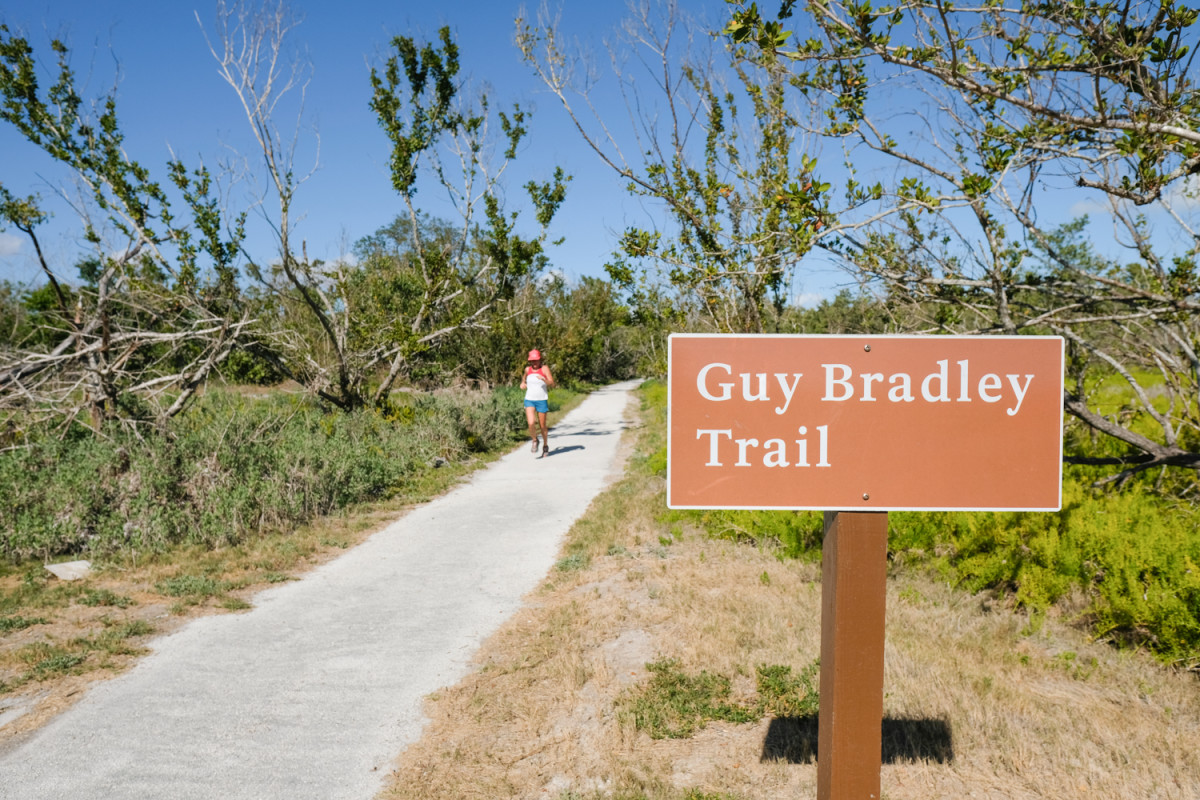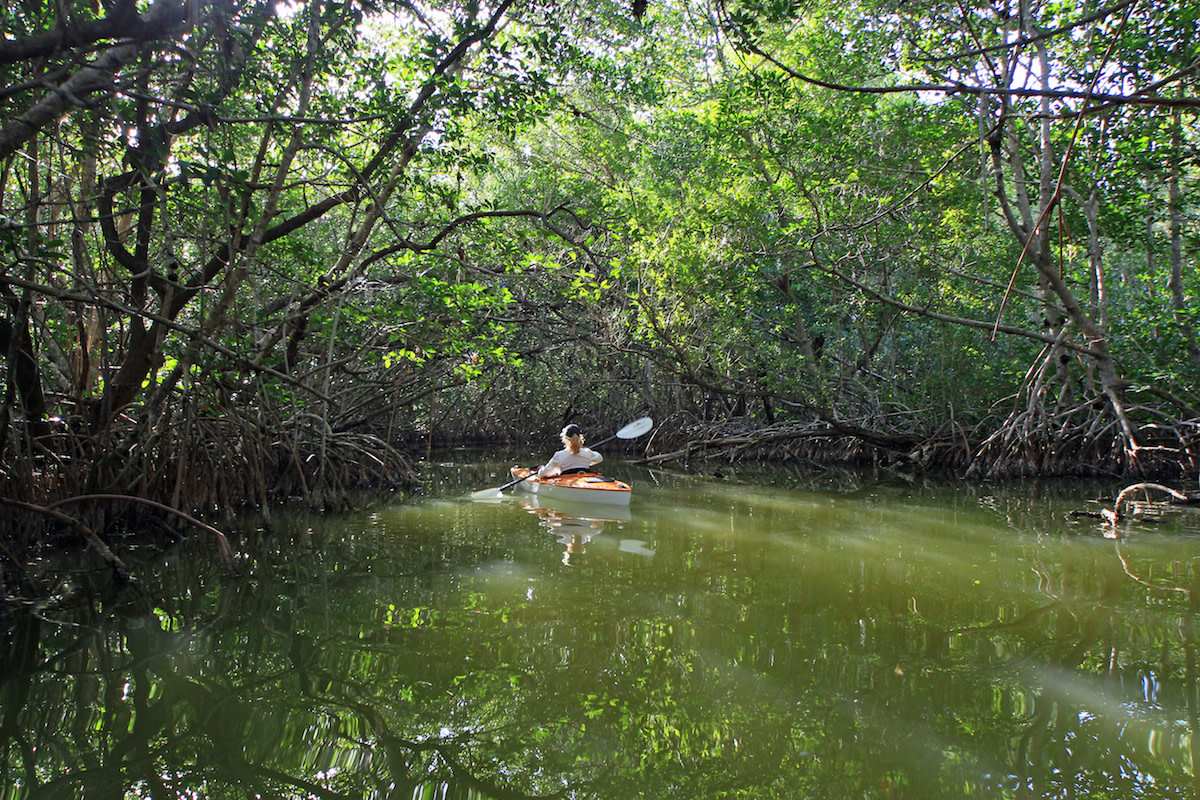With temperatures in much of the country hovering toward freezing, you’ve got two options. For one, you could just go with the flow, layer up, maybe drag ski or snowboard gear from the closet and embrace winter. Or, you could throw some warm-weather gear into a bag and head for Everglades National Park.
If that sounds like a curious choice, you may be in the majority of travelers who write off Everglades. For a national park of its size, in such close proximity to so many sizable population centers, calling this treasure underrated is no short stretch. Consider overall visitation. For sake of comparison, another southeastern national park, Great Smoky Mountains NP, is roughly one-third of the size of Everglades, but sees over 10 times as many annual visitors. According to recent stats, Everglades National Park sees around 1 million annual visitors (aside from last year’s government shutdown).
The reason the park is undervalued is simple: everyman access. It’s an enormous, wild and empty park. Beside Death Valley it represents the largest (non-Alaska) wilderness area managed by the NPS. With only three entrances, none connected to one another by road, it’s daunting to know where to go what to do.
The flip side of this challenge is the opportunity to experience wild, protected wetlands without the crowds, where a little willingness to get on the water and take advantage of the park’s backcountry assets can make all the difference. Here are a few key points on why the park deserves deeper consideration as the launching point for your next winter adventure.
Solitude
Yes, wintertime (aka the dry season), is the busier of seasons in the park, but there are still plenty of places — about 1.5 million acres of wetland to be exact — for you to enjoy a little bit of peace and quiet. To take full advantage, head to the literal end of the road: the southernmost Flamingo Visitor Center. It’s a long 37-mile drive on the main park access road from the eastern, main park (Homestead) entrance, but well worth the effort. Pick up a backcountry permit there. The Flamingo Marina can provision and equip paddlers with canoe and kayak rentals, a campground, store, plus paddler drop-offs to nearby reaches to get you off the grid for a few nights. Conversely, backcountry permits are also available at the park’s other main launching/landing location for multi-day paddling ventures, the Gulf Coast Visitor Center, at the northern entrance closest to Naples (there’s a $15 processing fee, but it’s only $2 to camp).
The Ultimate Guide to Exploring the Everglades by Kayak
Wilderness

The Everglades is the largest subtropical wilderness in the United States as well as a World Heritage Site. It’s a mouthful, but the opportunity remains to see large swaths of undeveloped and protected wilderness. Be sure to get out on at least one trail while you’re there. The Anhinga Trail near the Royal Palm Visitor Center is short (.8 miles long), flat and easy, though your chances of spotting alligators there are good. You can also add on a short distance to your hike by linking up with the nearby Gumbo Limbo Trail. While the Anhinga and Gumbo Limbo trails are great picks if you only have time for quick hikes, consider the Long Pine Key Trail for extended exploration. You can easily log a dozen miles on this out-and-back, or add upwards of 20-plus miles if you tack on some of the spur trails. It’s significantly less busy than the Anhinga Trail and, best of all, bikes are allowed (though road bikes are not recommended). Bonus for visiting in the winter: The mosquitos are less intense.
View this post on InstagramDid you know that the Long Pine Key area in Everglades National Park holds around 80% of all remaining pine rockland found in Florida? Since the late 1800s, urban development, agricultural expansion, and fragmentation dramatically reduced the distribution of pine rockland habitat. This critically imperiled habitat is a hotspot for plant biodiversity and is home to several federally listed endangered species such as the eastern indigo snake and our state mammal, the Florida panther. Photo by @theswampandthesea #Everglades #AmericasEverglades #EvergladesNationalPark #LongPineKey #PineTrees #Pineland #Pinerocklands #SlashPine #pinuselliottii #flnativeplants #keepflwild #Flora #Plants #SouthFlorida
Wildlife
Crocodile, alligator, dolphin, manatee, countless species of birds, fish, and snakes (including the non-native Burmese python) all live in the Everglades. It’s a unique opportunity to see these animals in their natural habitat — and one of the main reasons we think this park deserves more credit.

Boating
Getting out on the water is one of the single, best things to do when visiting the Everglades. There are several different ways to launch. You can bring your own kayak, canoe or SUP, or rent from one of the businesses within the park such as Flamingo Adventures. Both ends of the park have well-marked water trails with a variety of touring, from day-trips (no permit needed) in marshy bays, to multiple days exploring the maze of mangroves. For overnight excursions to some of the park’s backcountry chickee platforms for camping, keep in mind it’s a wilderness area with a network of paddling routes, so prepare accordingly (read some first-hand tips in our paddling guide here). If you’re somewhat new to boating, there’s also the option to tour with a guide or get a ticket to ride around with a captain from the comfort of a pontoon boat.
Location, location, location
The park is located in south Florida so you have a ton of options to continue your warm-weather adventure outside the park boundaries. Two obvious choices are: Miami, which is only 28 miles from the eastern section of the park; and the Keys, which are only about 50 miles from the park. Another worthy option to consider, if extending your trip to the Keys, is taking the ferry 70 miles beyond Key West to Dry Tortugas National Park — an even more remote, infrequently visited, outlying (and definitely underrated) satellite extension of Everglades National Park.
More Info from the National Park Service
Everglades Kayaking Fishing Adventure in Two Parts
Road Trip: Touring the Southeast’s Coastal SUP Adventure Hubs
Comments are closed.